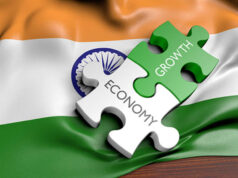As I write, it is midnight in Bangkok, Thailand. My air conditioner is keeping me cool, my room is well-lit, and my laptop is functioning. Electricity powers all my appliances and devices.
From a quick glance, electricity acts almost like goods in a market of perfect competition, similar to a market selling wheat, for example. Electrons, after all, are electrons. Electricity consumed in the morning for a coffee maker is no different than electricity consumed in the evening for primetime television. They are identical products. Except making electricity available has a high element of central planning involved as opposed to its provision through competition in a free market.
Historically, in many parts of the world, electricity utilities started off as a simple monopoly with one power producer providing direct electricity to consumers in small villages or towns. This is a feature shared between all goods that need a physical infrastructure like a grid for its delivery. To deliver electricity to end users in an efficient and reliable way requires management of electricity grids and entities running them enjoy a natural monopoly.
As societies progress, and towns become cities, the business of electricity utilities becomes more complex. Large power producers use large machinery to generate electricity. The source of fuel and location of their operations tends to get further away from city centres. These large power producers need to transmit electricity over long distances using high voltage grids. When electricity reaches cities, it needs to step-down to a medium and low voltage to power our appliances and devices. With increase in this complexity, the simple monopoly structure gets separated into four segments, that of generation, transmission, distribution, and retail.
For electricity users to benefit from the lowest price possible, competition is necessary. While grid owners and operators act like natural monopolies with single ownership and authority over physical infrastructure in their area, competition in electricity markets is introduced gradually at least in the generation segment.
Some countries are ahead of the curve and have achieved a state of wholesale competition, where several power producers compete to sell at the lowest price possible and provide in bulk to the electricity market. They manage to do this while maintaining profits from operational efficiency and effective management of fuel cost.
Some countries have taken the state of competition even further to achieve a state of retail competition. In these markets several companies buy electricity from power producers in bulk, and then sell it to individual consumers, to make profits. Consumers have the choice to buy from companies that offer the lowest price.
Not all countries, though, have developed electricity markets. In these countries, governments support the provision of electricity by providing for infrastructure, and legal frameworks to replace market exchanges. In such economies, producers of electricity take part in a process of reverse bidding, where various entities bid to build power plants, and sell electricity to a single entity which will procure it from them to retail it to end users. This is true for not just the market for electricity but also the market for power sources like coal and liquified natural gas. This structure is known as either a single buyer model or an enhanced single buyer model that has multiple power producers.
The single buyer model is a model close to being a command and control system, that can decide which power producer can sell electricity, at what price, and when. The industry term for this single entity who decides is a Transmission System Operator (TSO). While the model controlled by TSOs is lacking in free and open market competition, when compared with other models in advanced countries, it can become a potential stepping stone towards a fully liberalised electricity market. TSOs have some elements of competition where they are required by law to be impartial and allow all power producers an equal opportunity to connect with and sell to the grid. These terms are governed by the terms agreed and signed upon in electricity supply contracts.
Advanced economies in addition to electricity markets also have electricity operators who have the capability to offer dynamic pricing that can vary based on time of use and fluctuations in the demand and supply of electricity in the grid.
There is however a great disruption at sight to this arrangement of electricity markets. This is thanks to the dramatically decreasing prices of Solar PV systems and increase in their efficiency. Solar PV systems are enabling more and more consumers to become power producers themselves by simply installing such systems in their homes. While many countries still lag behind with limitations in technology and non supporting legal framework, the change is inevitable.
As I finish writing this piece, I realise I should have written it during the day. Not just to get more sleep, but also to benefit from consuming electricity generated by my own Solar PV system during the day.
While Thailand, where I live, may not have the electricity markets similar to those established in advanced countries, but in my home, such a market already exists! The day my Solar PV system started generating electricity for me during the day, I had the choice of consuming it or not. By installing the Solar PV system, I have become a producer and an entrepreneur in the market. I am now competing against the incumbent electricity utilities which sold electricity to me. If I do not want to choose to consume their electricity, I can produce my own. It is my own means of production.
With voluntary exchange through the market and the private ownership of the means of capital, a liberalised electricity market can now be found at what was once the last part of the value chain: at everyone’s home.
Post Disclaimer
The opinions expressed in this essay are those of the authors. They do not purport to reflect the opinions or views of CCS.






